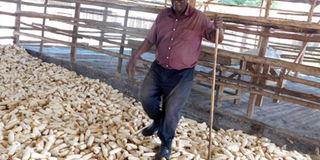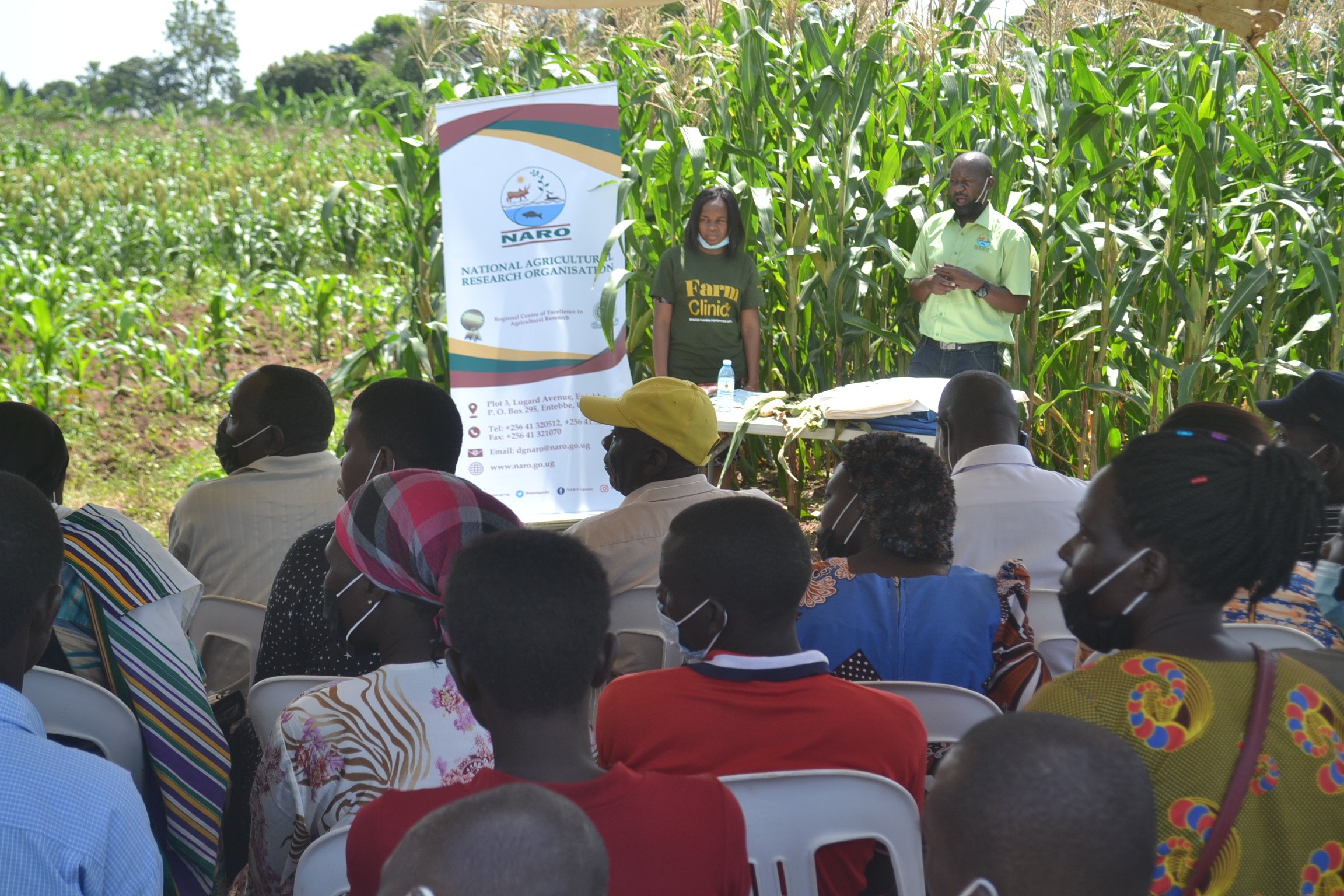Prime
How to manage maize after harvesting

Gerald Sendaula inspects part of his maize harvest inside the store at his farm. Photo | Michael J Ssali
What you need to know:
- Without using pesticides, hermetic storage bags work well in controlling pests. Weighing should be done before storage, as this enables the farmer to know the quantities harvested.
Due to the heavy rainfall experienced in most parts of the country in the past few months, and other factors, there is a bumper maize harvest almost everywhere in the country.
A prominent poultry farmer and feed dealer in Masaka, Aidan Kamugisha Kituufu, has told Seeds of Gold that the price of maize in the region has not fallen drastically as was expected because of the bountiful harvest which would normally reduce demand for the crop.
“Well, the price fell from Shs1,300 to Shs900 a kilogramme in the past three or four weeks, but now as I speak, it is rising again. It is an issue I am still investigating. But it could be the middlemen from whom I buy my stock that could be responsible for the rising prices,” says Kamugisha.
Middlemen
He said he is aware of some Kenyan and Tanzanian traders buying maize and he is attributing the apparently rising prices to such traders. He also wonders what happened to the silos the government built in different parts of the country in the early 90s with a view to store farmers’ grain and to curb food insecurity and price fluctuation.
“As a country we should have a way of safely storing maize and other grains to ensure that prices don’t unnecessarily fluctuate because of changing rainfall patterns,” says Kamugisha.
Maize trader Lawrence Sekyaya, of Manja Village, Kisekka Sub-county, Lwengo District, told Seeds of Gold, “The maize prices are falling. I have been able to purchase maize from my farmers at as low as Shs700 per kilogramme.” Maize harvesting is only beginning in the district and he believes that with time the maize prices are bound to drop since most farmers have pressing needs such as sending their children back to school which requires money. He also mentioned boarding schools which will need maize urgently to feed the children when they open. The majority of maize producers in Uganda are small-scale farmers with gardens hardly larger than acre. They grow maize as a source of money but it is also food for their large families.

Only large-scale farmers and big organisations have secure stores for grain.
Many household financial problems are tied to the maize harvest season and as soon as the crop is obtained most of them cannot wait too long before selling it off in order to offset outstanding issues. They even do not have secure storage for the crop which is prone to pests and vermin.
Storage
Keeping maize grain in the same house where humans live is risky because maize attracts rats and any fumigation efforts to control pests could become a health issue for the family members. Gerald Ssendaula, former Minister of Finance who is also a large scale maize farmer says, “It is normal for the maize prices to drop around the time of harvesting because most farmers are trying hard to solve outstanding financial issues that right now include school fees and other needs. When a commodity is in big supply the demand for it is reduced and so the prices go down.”
His advice is that farmers should keep the crop until the prices improve. He has constructed a huge store for the maize that was being harvested when Seeds of Gold visited his farm at Kaabagala Village in Kisekka Sub-county, Lwengo District where he has a maize field of some sixty acres.
“I will sell my maize when I get the right buyer, ready to pay me well,” he said.
He is of course well positioned to wait for the maize prices to improve since on his large farm of close to two square miles he also grows many other money generating crops such as pumpkins, beans and onions.
Post-harvest practices
Ssendaula was however, quick to point out that the farmers must ensure that in order to attract good prices for the crop they have to pay great attention to good postharvest practices.
“They should harvest the maize from the garden when it is dry,” he says.
“They should also plant the most marketable maize varieties that attract buyers and good prices. Buyers want good quality maize. If the maize is not attractive it cannot be sold at a high price.”
He has a well-built maize store large enough to keep 4,000 gunny bags of maize. It is well aerated and the maize is fully protected from rain, rats, and pests.
“We also have to guard against conditions that introduce aflatoxins in the maize,” he further said.
Maize is not just a cash crop. In fact it is more known as a food crop. It is also an important ingredient of livestock feed.
Therefore it must be handled with utmost care. It must not have strange smells. It must not have foreign objects such as stones, animal droppings, or anything else. It must not be packaged or put in bags where fertilisers or other chemical objects were contained. It must not be stored in the same room with pesticides and herbicides.
Hygienic food handling processes
The East African Community Maize Grain Standard dictates that all farmers must strictly follow hygienic food handling processes.

Gerald Sendaula inspects his maize crops which are ready for harvesting
It says maize is money and farmers ought to maximize production by planting improved varieties with proper spacing, applying fertilizers, weeding on time and fighting pests. The farmer must ensure that maize is thoroughly dried because the buyers will want to measure its moisture content before buying it.
If the farmer has to dry the maize after harvest it must not be put on the bare ground, tarmac or roof tops. It should be put on clean mats, tarpaulins, or drying racks. It must be covered and protected from rain. Moist conditions can lead to malting and development of aflatoxins.
Advice
Farmers are further required not to plant mixed seeds as most buyers prefer to buy maize grain of the same colour and size.
It must be covered and protected from rain. They must do proper shelling by perhaps using hands which cannot break the grain or motorized shellers. Beating maize cobs with sticks is not recommended because it can cause breakage and damage to maize grain.
The maize should be winnowed and sorted to get rid of foreign matter. Farmers should have a clean store or granary where to keep the harvested maize. It should be inaccessible to rodents and pests and agricultural services extension officers should be consulted for guidance on which fumigants to use in the fight against pests and rats. Rotten and diseased grain must not be sold because maize is food and any rotten grain causes bad smells in maize flour.
Insect or vermin damaged maize does not attract good prices for the farmer.
Africans have traditionally been able to store grain in granaries simply constructed out of mud, shrubs, and grass. These can still be used by smallholder farmers to store maize.
However, as Gerald Ssendaula advises, farmers that have sufficient land should engage in other economic activities or production of alternative crops so that they are not forced to sell their maize at give-away-prices because of an urgent need for cash. If a maize farmer also keeps livestock or grows other crops such as coffee or bananas or cassava as alternative sources of money he can garner some patience and wait to sell the maize when the demand is high and the prices are stable.




